When you start taking gaming seriously, you begin to think about every small detail that might improve your gaming experience. And so, you gradually give thought to switching everything to a gaming setup; your PC, your monitor, your CPU, your chairs, and tables. However, are all of these really worth it?
Let’s talk about gaming monitors. If you’re planning to buy one, you’re definitely wondering how gaming monitors make a difference in the gaming experience. And that’s what I’m here to answer in detail.
Gaming monitors have a much better response to commands reducing the searing of the pixels while fast movements. They deliver an enhanced refresh rate and color accuracy compared to other regular PC monitors.
That’s not it. As promised, I’ll present this matter in detail to you. Here we go!
Are Gaming Monitors Different from Regular Monitors?
Whether gaming monitors are different from regular monitors or not depends on the aspect of comparison. Because in a few aspects, gaming and regular monitors are quite similar. On a different aspect, gaming and regular monitors are quite different from each other. It varies with the person who’ll be owning and using it and his or her requirements.
While gaming monitors and regular monitors are different in some aspects, they are quite similar in some other aspects. What matters is whether the aspects that distinguish gaming monitors from regular monitors are important to you as a user. Let’s dig deeper into knowing the aspects that differentiate gaming monitors from other monitors.
What is a Gaming Monitor?
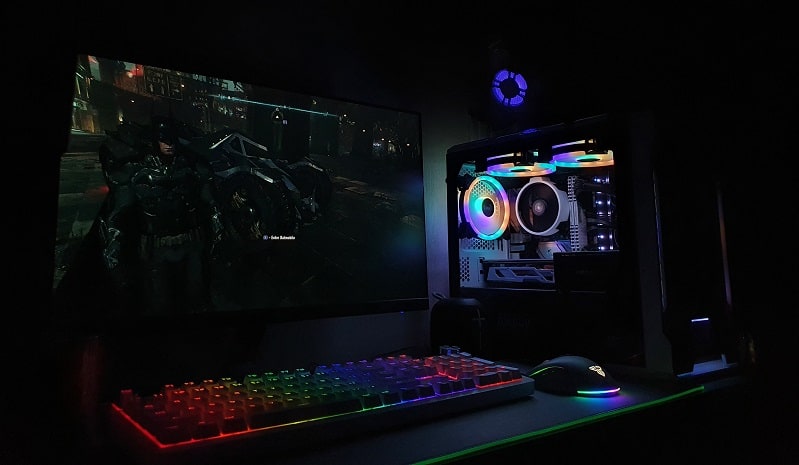
Before I start explaining the aspects, let’s make a smooth start by explaining what a gaming monitor is defined as. Gaming monitors, as their name suggests, are specialized monitors built and customized with features aiding in a better gaming experience.
If you’re a gamer, you know very well how important is the clarity and smoother movements and motions of the graphics. A rough motion and lack of refresh, response, and distinguishable color feature highly impact the gaming experience. It hampers the concentration and ruins the flow of the game.
And so, that is exactly what gaming monitors focus on. Gaming monitors feature excellent resolution while fast movements reduce the breakage of pixels along with higher refresh rates and better picture and color quality.
Pros and Cons of a Gaming Monitor
To make the gaming monitor picture clearer, let’s discuss the advantages it has to offer along with the disadvantages that further come with it. By now, you have received a fair idea of the advantages a gaming monitor might provide. These include better responsiveness, better refresh rate, high-quality motion picture without pixel breakage, less lagging while gaming, and distinguishable color feature.
However, there is hardly anything in this world that provides advantages without any disadvantages. Since it is a gaming monitor, there are several factors that it doesn’t focus on which regular monitors feature. Like if we talk about the resolution of the graphics and pictures, regular 5th generation monitors leave gaming monitors far behind.
Regular monitors are designed for multiple purposes rather than focusing on one and so, a good quality monitor can offer a great service in all aspects along with gaming as well. Moreover, gaming monitors are more expensive than regular monitors and are designed keeping professional gamers in mind.
How are Gaming Monitors and Regular Monitors Different?
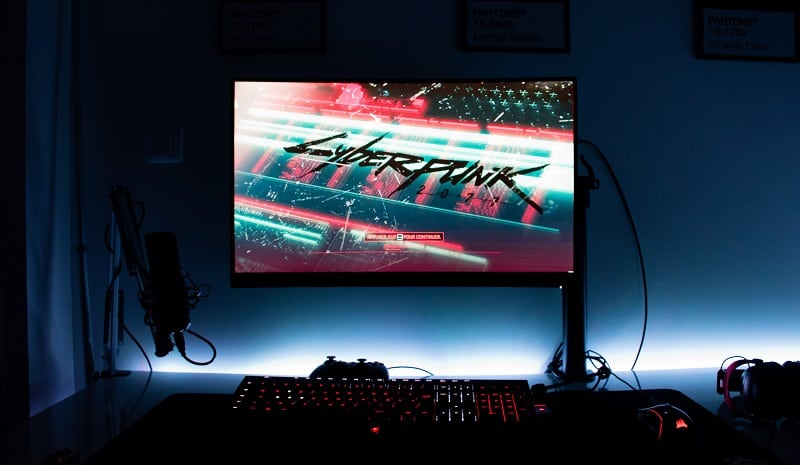
If you’re still not clear about the difference between gaming monitors and regular monitors, don’t worry. We won’t let you leave this site with an unclear concept. Now, it’s time to talk details. So, let’s dig into every single characteristic that distinguishes gaming monitors from regular monitors and take a look at some numerical evidence.
Price
In terms of price, gaming monitors are usually much costlier than regular monitors. The price of gaming monitors kind of starts where the price of high-quality regular monitors ends.
Feature
While gaming monitors highly feature a better gaming experience and video rendering, other regular monitors mostly feature a better overall working experience.
Responsiveness
The best feature of gaming monitors is their exquisite level of responsiveness compared to regular monitors. Gaming monitors usually have a response time of 5 milliseconds or less, whereas, regular monitors generally have a response time of about 10 milliseconds.
HDR
High dynamic range or HDR, is a feature allowing higher brightness, a wide range of colors, and higher contrast. It makes the content more realistic and distinguishable. While HDR is much more popular in many high-quality regular monitors, many average monitors lack good HDR. Whereas, gaming monitors usually tend to feature better HDR for a better gaming experience.
Refresh Rate
As I already mentioned before, gaming monitors feature higher refresh rates. While regular monitors might or might not feature a high refresh rate. The refresh rate of most gaming monitors is 144 Hz to 240 Hz. There are regular monitors with such high refresh rates (200 Hz max). But regular monitors usually come in a refresh rate of 60 Hz.
Resolution
The resolution of gaming monitors is just good enough as required for gaming. But the latest regular monitors highly focus on featuring a good resolution of pictures and videos.
Graphics
Generally, regular monitors also overtake gaming monitors in terms of graphics as most average monitors of this generation come with better graphics that gaming monitors hardly feature.
Color Production
Though gaming monitors highlight HDR, regular monitors still have a better color production than most gaming monitors.
Latency
Another important feature of gaming monitors for potential gamers is the lack of latency. Gaming experience in regular monitors usually falls behind compared to gaming monitors because of high rates of lagging.
Design
Gaming monitors are usually much more fashionable than regular monitors because gamers tend to incline towards themes, special colors, and RGB effects.
Panel
A major difference between gaming monitors and regular monitors is the panel. Gaming monitors bear IPS panels providing better speed whereas regular monitors usually have TN or VA panels.
What Makes Gaming Monitors Better for Gaming?
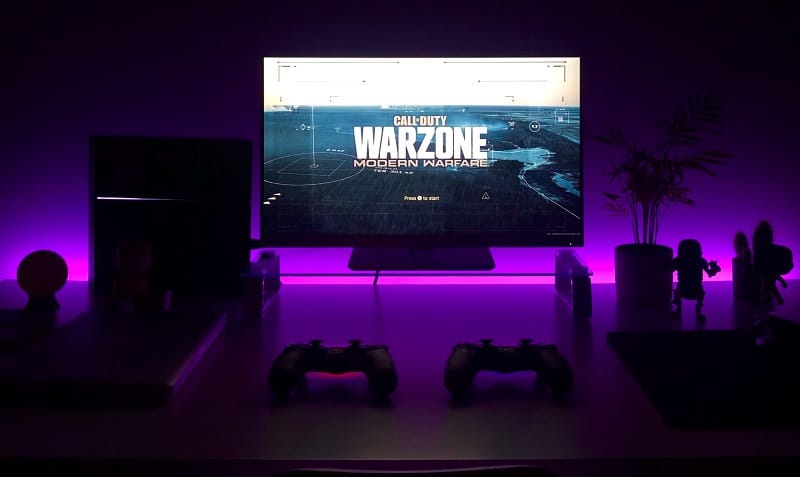
Now that you’ve got a clear picture of the differences between gaming and regular monitors, let’s talk about the main business. All these distinguishable features won’t actually make any difference if they don’t contribute to improving the gaming experience.
So, the money question here is, how exactly do these distinct features of gaming monitors improve your gameplay. Let’s find out!
Low Input Lag
Low input lag is the time required for the computer’s graphics processing unit to generate an image and appear on the external display. Onscreen lagging highly impacts a gamer’s gameplay. Because when your computer screen goes through extensive lagging, it hampers the flow of the game, gradually making you slower than others.
Especially, when you’re competing in a league or competition, a lagging monitor can potentially cause you and your team to lose. And so, gaming monitors especially feature an input lag of 2 to 4 milliseconds for improved gameplay.
Fast Response Time
Usually, many people baffle low input lag with fast response time where they are completely two different things. Fast response time refers to the time required for the monitor to receive a command from the user and respond to it. In the gaming world, a fast response is all that matters.
Because when you’re gaming online, with competitors from around the world, every millisecond makes a difference. Pro gamers win highly competitive leagues by a matter of seconds. And so, a fast response time can be a reason for someone’s win. Thus, gaming monitors highlight a much faster response time compared to all other regular monitors.
Screen Size
People usually tend to ignore the importance of screen size while gaming. Whereas, the screen size actually plays an extremely crucial role in gameplay. There is a definite territory of our eyes within which we can comfortably watch every movement taking place. But when anything exceeds that territory, we cannot properly judge every difference without separately looking into it.
Most regular monitors are comparatively larger lengthwise which makes it difficult for the gamer to focus on all factors of the screen altogether sitting so close to it. And so, gaming monitors usually come in a size of 9 inches lengthwise to reduce the stress of observing while gaming.
Can a Gaming Monitor Be Used as a Regular Monitor?
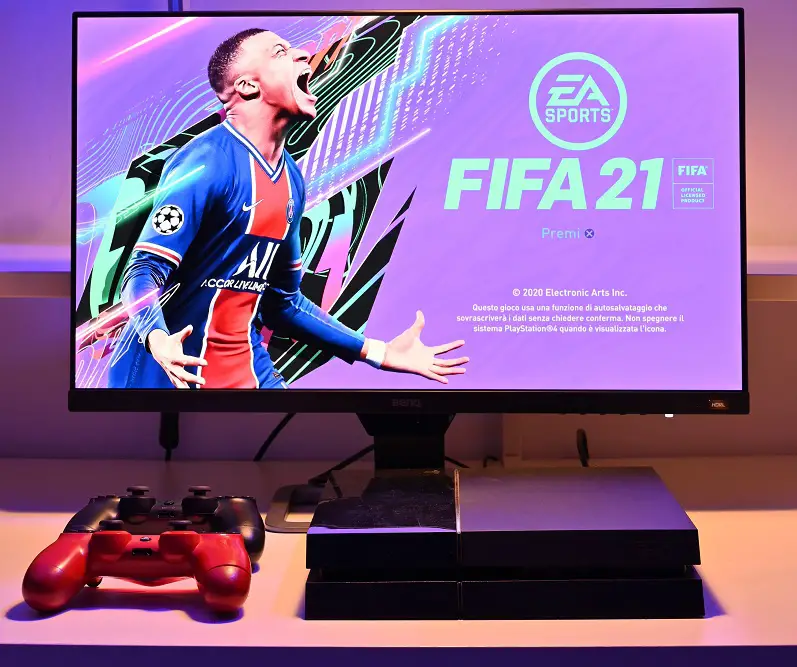
The most important feature of a gaming monitor is its responsiveness and faster refresh rate. A faster refresh rate and quick responsiveness help the gamers to play in real-time with a higher chance of performing well in league fights.
However, the faster responsiveness and refresh rate might not be that important while doing other tasks on the computer. So, getting a gaming monitor to do regular tasks is mostly a loss project. But if you’re a gamer and like to do other tasks on your computer too apart from gaming, then you can easily use a gaming monitor as a regular monitor when needed.
Though remember that gaming monitors might not always come with a good resolution and color production. So, if you want to use it for a high-quality picture or video editing, it might have a negative influence.
Can You Use a Regular Monitor for Gaming?
If you’re not much of a heavy gamer, you can fairly use your regular monitor for gaming. But regular monitors come in a wide range of types, features, and prices. You need to choose a monitor with a comparatively faster response and refresh rate along with the ability to take a heavy load for a long time.
However, suppose you’re a competitive and ambitious gamer with the potential and desire to compete in gaming leagues and championships. In that case, you might need to switch to a gaming monitor sooner or later. Because regular monitors won’t be enough to help you win gaming leagues.
Is Gaming Monitor Better Than TV for Gaming?
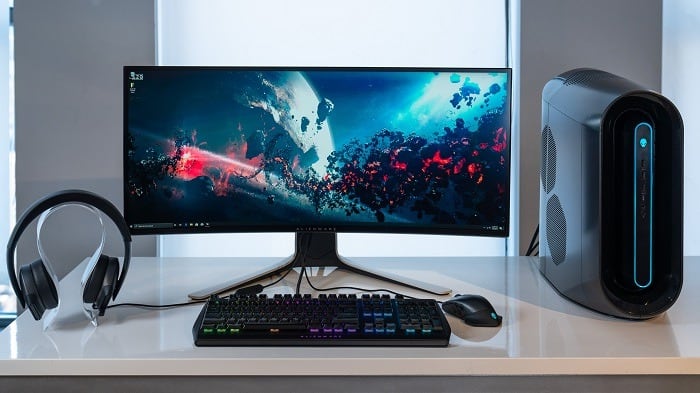
When it comes to size, image quality, AI technology, and so on, no monitor in the world will be able to exceed the accuracy and finesse of the latest LED TVs. TV provides you with an experience of real-life graphic quality while gaming and the larger size of TVs explore a different dimension of gaming.
However, gaming monitors leave TVs behind in the factor in which it leaves all other monitors or screens for gaming behind. That is the responsiveness. The TN panel TV bears provide poor responsiveness for which gaming on the TV can be fun and all but not appropriate for international competitions.
So, when it comes to professional gaming, TV is not even a sport to gaming monitors.
When Should You Get a Gaming Monitor?
A gaming monitor is a big investment, you should only buy a monitor with that much expense when it is worth it for you. If you’re not a heavy gamer or if you’re a heavy gamer but don’t have the ambition for professional gaming and competing in international competitions and leagues, a gaming monitor is not a worthwhile investment for you.
However, if you’re a gamer on the verge of professional gaming and are planning to dedicate a huge section of time to gaming, competing, and establishing yourself as a gamer, then you will have to switch to gaming monitors. Because regular monitors won’t be able to help you much once you enter the competitive world of professional gaming.
Types of Gaming Monitors and their Functions
Gaming monitors can be categorized into different types on the basis of various features. However, based on the shape and size, gaming monitors can be divided into three types. Here’s what the three different styles of gaming monitors highlight.
Flat: Flat gaming monitors are almost like regular monitors but usually thinner in length and comparatively wider. Flat gaming monitors are preferred when the monitor isn’t too big. Or else, it might cause neck pain while gaming. Flat monitors are best 16:9 aspects than 21:9.
Curved: If you don’t want to compromise the size of the monitor and plan to go big, the healthier option would be a curved monitor. Curved monitors make sure you don’t need to move your neck while gaming and get a bigger picture just with the movements of the eyeballs.
Ultrawide: Ultrawide gaming monitors are usually always curved and they would look like two to three wide monitors joined together. Ultrawide gaming monitors provide a more immersive gaming experience with viewing angles that no other gaming monitors can offer.
Final Words
I hope I was able to completely explain to you how gaming monitors make a difference from a regular monitor. So, if you’re planning to switch to a gaming monitor to accelerate your pro gaming career, no reservation should be left to hold you back. Break a leg!

Hello Good People! This is Pavel and Welcome to PC Delight!
I’m an Electronics Engineer by profession with a passion for Gaming & PC builds. When I came up with the idea for PC Delight, it was my goal to share & offer the very best PC building ideas to tech-loving people like myself.
Since my school days, I’ve been just addicted to gaming & PCs. That leads me to experiment with various ways around the very niche, resulting in great productivity. And I’m here to share those practical experiences. So that next time you start some experiment with your PC builds or struggle to cope with a certain game, I’m here with the solutions. With these philosophies, I started my journey in 2017 and just kept going.
